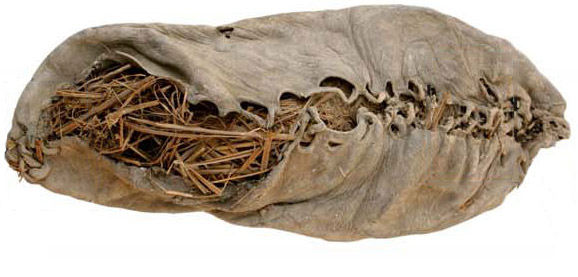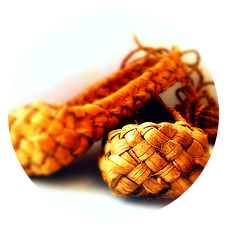
It’s hard to imagine a time before the invention of shoes. Yet what started as a practical venture has grown into a varied, booming industry just as concerned with art as it is with functionality. Though all shoes share basic characteristics, their coloring, materials, and designs have transformed drastically over thousands of years in the fascinating history of footwear.
From archeological and paleoarcheological evidence, experts hypothesize that shoes were invented around in the Middle Paleolithic period approximately 40,000 years ago. However, it wasn’t until the Upper Paleolithic period that footwear was consistently worn by populations. The earliest shoe prototypes were soft, made from wraparound leather, and resembled either sandals or moccasins.
Spanish cave drawings from more than 15,000 years ago show humans with animal skins or furs wrapped around their feet. The body of a well-preserved “ice-man” nearly 5,000 years old wears leather foot coverings stuffed with straw. Shoes, in some form or another, have been around for a very long time. The evolution of foot coverings, from thesandal to present-day athletic shoes that are marvels of engineering, continues even today as we find new materials with which to cover our feet.
Has the shoe really changed that much though? We are, in fact, still wearing sandals – the oldest crafted foot covering known to us. Moccasins are still readily available in the form of the loafer. In fact, many of the shoes we wear today can be traced back to another era. The Cuban heel may have been named for the dance craze of the 1920s, but the shape can be seen long before that time. Platform soles, which are one of the most recognisable features of footwear in the 1970s and 1990s were handed down to us from 16th century chopines. Then, high soles were a necessity to keep the feet off of the dirty streets. Today, they are worn strictly for fashion’s sake. The poulaine, with its ridiculously long toes is not that different from the “winkle-pickers” worn in the 1960s.
http://www.footwearhistory.com/
The simplest way to protect feet was to grab what was handy – bark, large leaves and grass – and tie them under the foot with vines. In hot countries this developed into the sandal made from woven palms, grass or plant fibres and attached to the foot with toe loops. Examples of early sandals have been found in Japan, Polynesia and America.
Few early shoes have survived. Fragments of Bronze Age footwear have been found in excavations but not enough to determine styles. But from the Roman times onwards many shoes have survived suggesting that there were many more shoe styles than one would expect.
http://www.northampton.gov.uk/homepage/273/the_history_of_shoes
Highly insulated footwear aided human survival in the far North where thermal insulation was essential to survival and impaired mobility they caused was relatively unimportant. All other footwear usage comes from an aesthetic tradition of body art through foot decoration. They could not have been used by hunter-gatherers because optimal mobility was essential to survival. Their usage commenced with civilizations and were first used by all social classes with the European Renaissance. Accordingly, humans retain feet that were optimized through natural selection to be in direct contact with natural substrates.
http://www.stevenrobbinsmd.com/barefoot-notes/footwear-shoe-history
